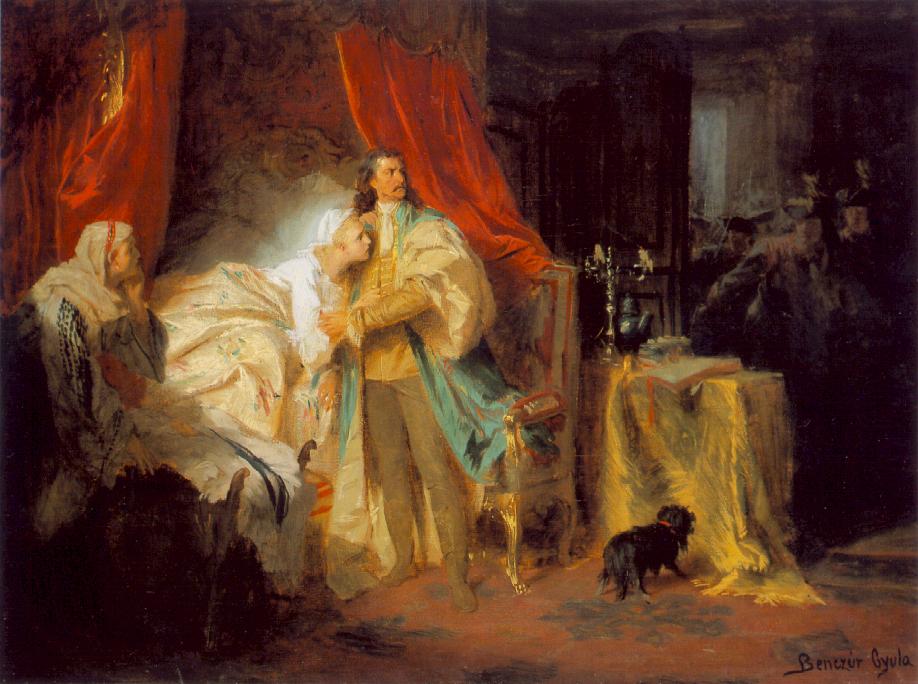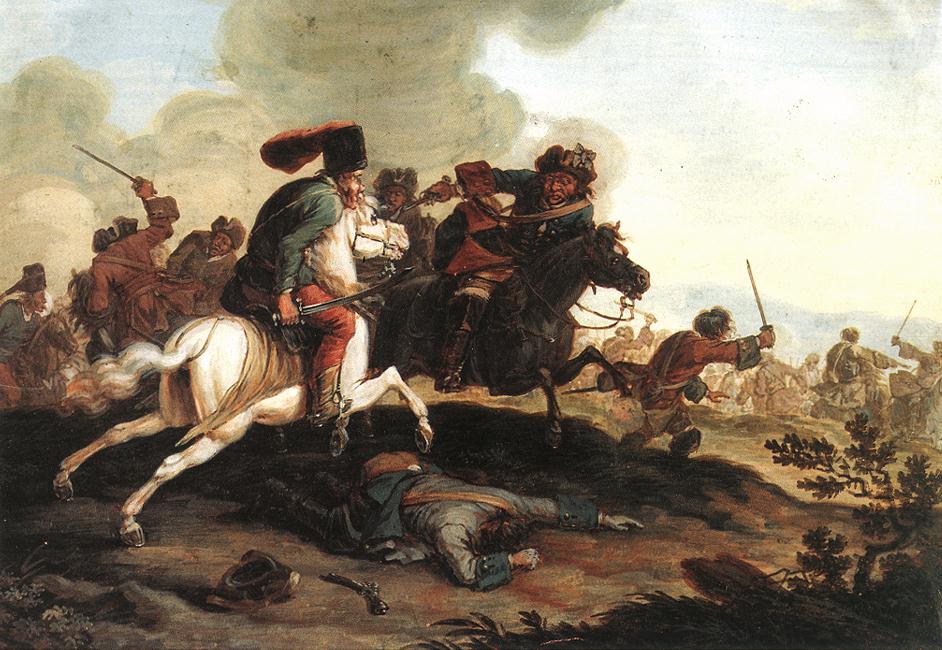|
Mihály Mikes (soldier)
Count Mihály Mikes de Zabola (? – 6 January 1721, in Csesztve) was a Hungarian landowner and aristocrat in Transylvania from the prestigious Mikes family. He served as Captain General of Háromszék (one of the geographical regions of Székely Land) in 1691. He was created Baron by Leopold I in 1693. Three years later he earned the title of Count for his family. Later he was appointed Ispán (Count; ''comes'') of Belső-Szolnok County in 1700. During the Rákóczi's War of Independence, he was captured by the kuruc in 1703. After that he became a supporter of Francis II Rákóczi. He was elected to the Kuruc Senate by the Diet of Marosvásárhely (today: Târgu Mureș, Romania) in 1707. He functioned as commander of the exiled kuruc people in the Romanian principalities (Moldavia and Wallachia Wallachia or Walachia (; ; : , : ) is a historical and geographical region of modern-day Romania. It is situated north of the Lower Danube and south of the Southern Carpa ... [...More Info...] [...Related Items...] OR: [Wikipedia] [Google] [Baidu] |
Csesztve
Csesztve () is a village in Nógrád county, Hungary. Etymology The name comes from a Slavic Slavic, Slav or Slavonic may refer to: Peoples * Slavic peoples, an ethno-linguistic group living in Europe and Asia ** East Slavic peoples, eastern group of Slavic peoples ** South Slavic peoples, southern group of Slavic peoples ** West Slav ... personal name ''Čestovoj'', ''Častovoj''. 1255 ''Chestue'', 1339 ''Chestwe''. External links Street map References Populated places in Nógrád County {{Nograd-geo-stub ... [...More Info...] [...Related Items...] OR: [Wikipedia] [Google] [Baidu] |
Francis II Rákóczi
Francis II Rákóczi (, ; 27 March 1676 – 8 April 1735) was a Hungarian nobleman and leader of the Rákóczi's War of Independence against the Habsburgs in 1703–1711 as the prince () of the Estates Confederated for Liberty of the Kingdom of Hungary. He was also Prince of Transylvania, an Imperial Prince, and a member of the Order of the Golden Fleece. Today he is considered a national hero in Hungary. His name is historically also spelled Rákóczy, in , in , in , in (, ), in , in . Although the Hungarian parliament offered Rákóczi the royal crown, he refused it, choosing instead the temporary title of the "Ruling Prince of Hungary". Rákóczi intended to bear this military-sounding title only during the anti-Habsburg war of independence. By refusing the royal crown, he proclaimed to Hungary that it was not his personal ambition that drove the war of liberation against the Habsburg dynasty. Childhood He was the richest landlord in the Kingdom of Hungary and the count (' ... [...More Info...] [...Related Items...] OR: [Wikipedia] [Google] [Baidu] |
Hungarian Soldiers
Hungarian may refer to: * Hungary, a country in Central Europe * Kingdom of Hungary, state of Hungary, existing between 1000 and 1946 * Hungarians/Magyars, ethnic groups in Hungary * Hungarian algorithm, a polynomial time algorithm for solving the assignment problem * Hungarian language, a Uralic language spoken in Hungary and all neighbouring countries * Hungarian notation, a naming convention in computer programming * Hungarian cuisine Hungarian or Magyar cuisine (Hungarian language, Hungarian: ''Magyar konyha'') is the cuisine characteristic of the nation of Hungary, and its primary ethnic group, the Hungarians, Magyars. Hungarian cuisine has been described as being the P ..., the cuisine of Hungary and the Hungarians See also * * {{disambiguation Language and nationality disambiguation pages ... [...More Info...] [...Related Items...] OR: [Wikipedia] [Google] [Baidu] |
1721 Deaths
Events January–March * January 6 – The Committee of Inquiry on the collapse of the South Sea Company in Kingdom of Great Britain, Great Britain publishes its findings. * February 5 – James Stanhope, 1st Earl Stanhope, James Stanhope, chief minister of Great Britain, dies a day after collapsing while vigorously defending his government's conduct over the "South Sea Bubble" in Parliament. * March 24 – Johann Sebastian Bach's ''Brandenburg concertos'' are completed, and dedicated to Christian Ludwig of Brandenburg-Schwedt. April–June * April 4 – Robert Walpole becomes the first Prime Minister of Great Britain (although this is more a term of disparagement at this time). * April 21 – The deadliest 1721 Boston smallpox outbreak, outbreak of smallpox in the history of Boston begins when the British ship HMS ''Sea Horse'' arrives in Boston Harbor with a crew of sailors who had survived a smallpox epidemic. One of the ''Seahorse'' crew who had ... [...More Info...] [...Related Items...] OR: [Wikipedia] [Google] [Baidu] |
Principality Of Wallachia
Wallachia or Walachia (; ; : , : ) is a historical and geographical region of modern-day Romania. It is situated north of the Lower Danube and south of the Southern Carpathians. Wallachia was traditionally divided into two sections, Muntenia (Greater Wallachia) and Oltenia (Lesser Wallachia). Dobruja could sometimes be considered a third section due to its proximity and brief rule over it. Wallachia as a whole is sometimes referred to as Muntenia through identification with the larger of the two traditional sections. Wallachia was founded as a principality in the early 14th century by Basarab I after a rebellion against Charles I of Hungary, although the first mention of the territory of Wallachia west of the river Olt dates to a charter given to the voivode Seneslau in 1246 by Béla IV of Hungary. In 1417, Wallachia was forced to accept the suzerainty of the Ottoman Empire; this lasted until the 19th century. In 1859, Wallachia united with Moldavia to form the United ... [...More Info...] [...Related Items...] OR: [Wikipedia] [Google] [Baidu] |
Principality Of Moldavia
Moldavia (, or ; in Romanian Cyrillic: or ) is a historical region and former principality in Eastern Europe, corresponding to the territory between the Eastern Carpathians and the Dniester River. An initially independent and later autonomous state, it existed from the 14th century to 1859, when it united with Wallachia () as the basis of the modern Romanian state; at various times, Moldavia included the regions of Bessarabia (with the Budjak), all of Bukovina and Hertsa. The region of Pokuttya was also part of it for a period of time. The western half of Moldavia is now part of Romania, the eastern side belongs to the Republic of Moldova, and the northern and southeastern parts are territories of Ukraine. Name and etymology The original and short-lived reference to the region was ''Bogdania'', after Bogdan I, the founding figure of the principality. The names ''Moldavia'' and ''Moldova'' are derived from the name of the Moldova River; however, the etymolo ... [...More Info...] [...Related Items...] OR: [Wikipedia] [Google] [Baidu] |
Romania
Romania is a country located at the crossroads of Central Europe, Central, Eastern Europe, Eastern and Southeast Europe. It borders Ukraine to the north and east, Hungary to the west, Serbia to the southwest, Bulgaria to the south, Moldova to the east, and the Black Sea to the southeast. It has a mainly continental climate, and an area of with a population of 19 million people. Romania is the List of European countries by area, twelfth-largest country in Europe and the List of European Union member states by population, sixth-most populous member state of the European Union. Europe's second-longest river, the Danube, empties into the Danube Delta in the southeast of the country. The Carpathian Mountains cross Romania from the north to the southwest and include Moldoveanu Peak, at an altitude of . Bucharest is the country's Bucharest metropolitan area, largest urban area and Economy of Romania, financial centre. Other major urban centers, urban areas include Cluj-Napoca, Timiș ... [...More Info...] [...Related Items...] OR: [Wikipedia] [Google] [Baidu] |
Târgu Mureș
Târgu Mureș (, ; ; German language, German: ''Neumarkt am Mieresch'') is the seat of Mureș County in the historical region of Transylvania, Romania. It is the list of cities and towns in Romania, 16th-largest city in Romania, with 116,033 inhabitants as of the 2021 Romanian census, 2021 census. It lies on the Mureș (river), Mureș River, the second-longest river in Romania (after the Danube). Names and etymology The current Romanian language, Romanian name of the city, ''Târgu Mureș'', is the equivalent of the Hungarian language, Hungarian ''Marosvásárhely'', both meaning "market on the Mureș (river), Mureș (Maros) [River]". ''Târg'' means "market" in Romanian and ''vásárhely'' means "marketplace" in Hungarian. Local Hungarians often shorten ''Marosvásárhely'' to ''Vásárhely'' in speech. The Society of Jesus, Jesuit priest Martin Szentiványi provides the first known written reference naming the city; in his work ''Dissertatio Paralipomenonica Rerum Memor ... [...More Info...] [...Related Items...] OR: [Wikipedia] [Google] [Baidu] |
Kuruc
Kuruc (, plural ''kurucok''), also spelled kurutz, refers to a group of armed anti- Habsburg insurgents in the Kingdom of Hungary between 1671 and 1711. Over time, the term kuruc has come to designate Hungarians who advocate strict national independence and the term " labanc" to designate Hungarians who advocate cooperating with outside powers. The term kuruc is used in both a positive sense to mean “patriotic” and in a negative sense to mean “chauvinistic.” The term labanc is almost always used in a negative sense to mean “disloyal” or “traitorous”. This term originally referred to Habsburg troops, mainly Austrian imperial soldiers, garrisoned in Hungary. The kuruc army was composed mostly of impoverished lower Hungarian nobility and serfs, including Hungarian Protestant peasants and Slavs. They managed to conquer large parts of Hungary in several uprisings from Transylvania before they were defeated by Habsburg imperial troops. Name The word ''kuruc'' was ... [...More Info...] [...Related Items...] OR: [Wikipedia] [Google] [Baidu] |
Transylvania
Transylvania ( or ; ; or ; Transylvanian Saxon dialect, Transylvanian Saxon: ''Siweberjen'') is a List of historical regions of Central Europe, historical and cultural region in Central Europe, encompassing central Romania. To the east and south its natural border are the Carpathian Mountains and to the west the Apuseni Mountains. Broader definitions of Transylvania also include the western and northwestern Romanian regions of Crișana and Maramureș, and occasionally Banat. Historical Transylvania also includes small parts of neighbouring Western Moldavia and even a small part of south-western neighbouring Bukovina to its north east (represented by Suceava County). Transylvania is known for the scenery of its Carpathian landscape and its rich history, coupled with its multi-cultural character. It also contains Romania's second-largest city, Cluj-Napoca, and other very well preserved medieval iconic cities and towns such as Brașov, Sibiu, Târgu Mureș, Bistrița, Alba Iuli ... [...More Info...] [...Related Items...] OR: [Wikipedia] [Google] [Baidu] |
Rákóczi's War Of Independence
Rákóczi's War of Independence (1703–1711) was the first significant attempt to topple the rule of the Habsburgs over Royal Hungary, Hungary. The war was conducted by a group of noblemen, wealthy and high-ranking progressives and was led by Francis II Rákóczi and resigned soldiers and peasants fought alongside the noblemen. The insurrection was unsuccessful, ending with the Treaty of Szatmár; however, the Hungarian nobility managed to partially satisfy Hungarian interests. Prelude With the Treaty of Karlowitz in 1699, the Ottoman Empire renounced almost all of its claims to some of Ottoman Hungary, its territories, which were conquered from the medieval Kingdom of Hungary after 1526. The nobility was against Habsburg rule because the lands formerly taken away from them by the Ottomans were returned only to those who could prove their right to own the property and could pay 10% of its worth to the Habsburgs. If they failed to do so, the property went to creditors of the Emp ... [...More Info...] [...Related Items...] OR: [Wikipedia] [Google] [Baidu] |






